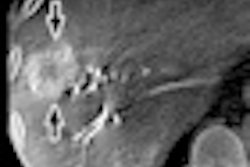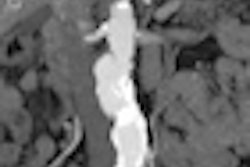Monday, November 26 | 10:40 a.m.-10:50 a.m. | SSC14-02 | Room S403A
Digital tomosynthesis could be a better alternative than conventional kidney, ureter, and bladder (KUB) radiography or unenhanced CT for detecting urinary stones, according to this presentation by Chinese researchers.While KUB radiography is the primary method for detecting urolithiasis, it can be affected by intestinal gas and bones of the abdominal and pelvic cavity. Unenhanced CT is recommended for urolithiasis diagnosis in patients with acute flank pain, but use of the modality for screening or follow-up raises concerns about cost and radiation exposure, according to Dr. Liu Shifeng of Tsinghua University.
Digital tomosynthesis could offer an option, as it can collect volume data in a single scan to reconstruct images in multiple planes. Early experiments show that tomo is relatively unaffected by intestinal gas, Shifeng said.
The researchers examined a population of 80 patients with a total of 138 stones proved by ultrasound. The patients underwent tomo, CT, and KUB exams, and the number of stones detected was recorded.
Tomosynthesis had a detection rate of 94% before bowel preparation, compared with a detection rate of 67% for KUB after bowel preparation (p < 0.05). The group also found no statistically significant difference in detection between tomosynthesis and CT with 3D maximum intensity projection (MIP). Tomosynthesis also had lower radiation dose, at 8.67 mGy, compared with low-dose MDCT (13.2 mGy) and high-dose MDCT (51.02 mGy).
The researchers concluded by recommending digital tomosynthesis for diagnosing urinary stones, localizing lithotripsy procedures, and postoperative follow-up.




















